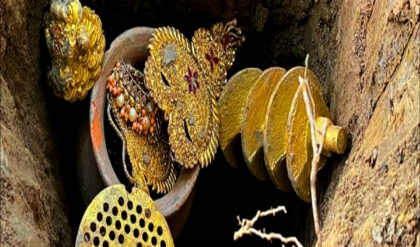
The Truth About Tropical Forest Animals and Their Dangers: Navigating the Wild Side
Tropical forests are enchanting realms teeming with life, where exotic creatures roam and vibrant ecosystems thrive. While these lush environments capture our imaginations, it is crucial to understand the potential dangers that come with encountering the animals that call these forests home. Join us as we unveil the truth about tropical forest animals and shed light on the precautions necessary for navigating their wild side.
- Venomous Snakes:
Tropical forests are home to a multitude of venomous snakes, such as the infamous vipers and deadly cobras. These serpents possess potent venom that can cause severe harm or even be fatal to humans. It is vital to exercise caution and be knowledgeable about snake identification and behavior when exploring these habitats. - Predatory Big Cats:
Leopards, jaguars, and tigers are among the majestic big cats that inhabit tropical forests. While these creatures are awe-inspiring, they are also apex predators with the ability to cause harm. Encountering a big cat in its natural habitat requires a respectful distance, as they are territorial and may perceive humans as a threat. - Poisonous Frogs and Insects:
Tropical forests are home to a myriad of colorful and fascinating frogs and insects, some of which possess toxins that can be lethal. Poison dart frogs, for example, derive their toxicity from their diet and can be deadly if touched or ingested. It is crucial to appreciate these creatures from a safe distance and avoid any direct contact. - Aggressive Primates:
Monkeys and apes, such as howler monkeys and gorillas, can exhibit aggressive behavior if they feel threatened or cornered. Their strength and agility make it important to observe them from a respectful distance and avoid any actions that may provoke them. - Stinging Invertebrates:
Tropical forests are also home to a variety of stinging invertebrates, including bees, wasps, and ants. Some species possess powerful stings or bites that can cause intense pain, allergic reactions, or, in rare cases, even be life-threatening. Awareness of these creatures and their habitats is essential to minimize the risk of encounters. - Disease-Carrying Insects:
Tropical forests are notorious for harboring disease-carrying insects such as mosquitoes, which can transmit illnesses like malaria, dengue fever, or Zika virus. Taking appropriate precautions, such as wearing protective clothing and using insect repellents, is vital to reduce the risk of exposure to these diseases.
Understanding the inherent dangers of tropical forest animals is crucial for both conservation efforts and personal safety. It is important to approach these environments with respect and caution, appreciating the beauty and diversity of the wildlife while recognizing the potential risks involved.
By educating ourselves about the behavior, habitats, and potential hazards of tropical forest animals, we can coexist with these remarkable creatures in a responsible and sustainable manner. Through responsible ecotourism, conservation initiatives, and ongoing research, we can strike a balance that allows us to appreciate the wonders of tropical forests while ensuring the safety and well-being of both humans and wildlife.
In conclusion, the truth about tropical forest animals and their dangers is a reminder that these environments are complex and require a cautious approach. With knowledge, respect, and responsible actions, we can fully embrace the marvels of tropical forests while minimizing potential risks and fostering a harmonious relationship with the remarkable creatures that inhabit them.
 ˈträpək(ə)l
ˈträpək(ə)l
nhiệt đới
tính từ
thuộc về nhiệt đới





